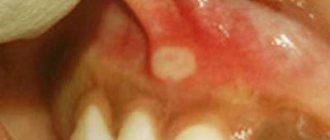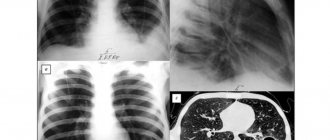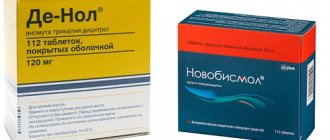The most effective antibacterial drugs
In each clinical case, the most effective antibiotics for bronchitis are different, since the causative agents of the disease can vary greatly. Sputum culture, which accurately identifies the causative agent of the pathology, will help you choose the right drug. What antibiotics to prescribe for bronchitis should be determined by your doctor.
He has several groups of antibacterial drugs at his disposal:
1. Penicillins supplemented with clavulanic acid. The following are popular: Augmentin, Panclave, Amoxiclav.
2. Macrolides. Popular drugs in this group: Sumamed, Claricin, Erythromycin.
3. Fluoroquinolones. Prescribed when penicillins and macrolides do not justify themselves. The following drugs are used: Avelox, Rotomox, Moxifloxacin.
4. Cephalosporins. They are used in the treatment of the obstructive form of the disease, administered parenterally. They have proven themselves well: Ceftriaxone, Thornaxon, Rocephin.
When choosing antibiotics for bronchitis, doctors take into account the patient’s age, frequency of exacerbations, severity of bronchial obstruction syndrome and the presence of concomitant diseases.
Uncontrolled use of antibiotics contributes to the formation of resistance in bacteria to their action.
Clarithromycin: properties, treatment
Antibiotics, as an effective category of drugs, have long and firmly held a leading position in the treatment of infectious and inflammatory diseases of varying severity and direction.
They are also used as parallel auxiliary and preventive agents in therapy associated with pathologies of the digestive system, cardiovascular system, musculoskeletal system and many other ailments.
All antibiotics are divided into groups according to their chemical composition and action:
- tetracyclines;
- chloramphenicol;
- penicillins;
- cephalosporins;
- macrolides;
- aminoglycosides;
- lincosamides;
- glycopeptides;
The main function of these drugs is to suppress the proliferation of harmful bacteria inside the body, without harming healthy cells.
Names of tablets that can be taken for bronchitis
Many patients are interested in the names of antibiotics for bronchitis in adults in tablets. Some try, based on the experience of others, to choose their own treatment. But still, in order to avoid serious consequences, it is better to leave this prerogative to specialized specialists.
Azithromycin
For bronchitis in adults, Azithromycin is often prescribed. The drug contains an active substance with the same name, which belongs to the macrolides from the azalide group. The spectrum of its action is quite wide. It is produced by various Russian pharmacological companies.
Sumamed
Another popular antibiotic for bronchitis is Sumamed. This is a bacteriostatic antibacterial agent containing azithromycin. It is produced in Croatia. This is a more expensive analogue of domestic Azithromycin. The course dose of the drug is 1.5 g. Take it 1 hour before or 2 hours after a meal.
Augmentin
For bronchitis, Augmentin can be prescribed. The drug contains amoxicillin and clavulanic acid. The presence of the latter protects amoxicillin from destruction by beta-lactamases. Thanks to this, the spectrum of action of Augmentin significantly expands. The antibiotic is produced in the UK.
Solutab Flemoxin
The Netherlands produces the drug Flemoxin Solutab, used for bronchitis. It contains amoxicillin (semi-synthetic penicillin). The tablet is swallowed whole, chewed or pre-dissolved in water to form a syrup/suspension.
Suprax
Suprax is also used for bronchitis. It contains cefixime, a semi-synthetic antibiotic from the group of third-generation cephalosporins, which has a bactericidal effect. The tablet is swallowed with a glass of clean water, or a suspension is prepared from it and immediately drunk. The drug is produced in Italy.
Biseptol
For bronchitis in adults, Biseptol is often prescribed. This is a combination antimicrobial drug consisting of sulfamethoxazole and trimethoprim. It immediately fights a large list of microbial agents. Take Biseptol orally after meals. The dose is prescribed individually. Biseptol is produced in Poland.
Zinnat
The antibiotic Zinnat is also popular for bronchitis. It contains cefuroxime, an antibacterial agent from the group of second generation cephalosporins with a bactericidal effect. For optimal absorption, it is recommended to take the drug after meals. Zinnat is produced in the UK.
Doxycycline
For bronchitis, Doxycycline may be prescribed. The drug contains the active substance of the same name, which is a semi-synthetic tetracycline. It is a bacteriostatic antibiotic that acts against a variety of pathogens. Doxycycline is produced by domestic manufacturers and is available in capsules.
Ciprofloxacin
For bronchitis in adults, it is also appropriate to prescribe Ciprofloxacin. It contains the active component of the same name. It is produced by Russian and some foreign pharmaceutical companies. This is a broad-spectrum antimicrobial agent of the fluoroquinolone group.
When used on an empty stomach, the absorption of ciprofloxacin increases.
Erythromycin
Another domestic drug is Erythromycin. It belongs to the bacteriostatic macrolides. According to the instructions for use, Erythromycin tablets for bronchitis are taken 1-2 pieces 2-4 times a day. This must be done in a good interval between meals (1-3 hours should pass before or after). The tablet must not be split or chewed.
Klacid
For bronchitis, Italian tablets Klacid are prescribed. They contain clarithromycin, a semisynthetic macrolide. The usual recommended dose of the drug for adults is 1 tablet (250 mg) 2 times a day. Take Klacid regardless of food intake for 5-14 days.
Vilprafen
The Dutch drug Vilprafen for bronchitis has also proven itself to be effective. Its active ingredient is josamycin. This is another option for macrolides. The standard dose of Vilprafen is 1 tablet (500 mg) 3 times a day. The duration of treatment depends on the nature and severity of the infectious process.
Clarithromycin
Domestic Clarithromycin for bronchitis can become an alternative to imported Klacid. They both contain a second-generation antibiotic from the group of macrolides, which act on many microbial organisms, and also have similar regimens of use.
Tsifran
Indian tablets Cifran are also used for bronchitis. They contain ciprofloxacin, a broad-spectrum antimicrobial substance from the group of fluoroquinolones. Tsifran has a bactericidal effect. If you take it on an empty stomach, the active substance enters the systemic bloodstream faster.
It is not recommended to take Cifran with dairy products or fortified with calcium, as they impair the absorption of ciprofloxacin.
Indications for use of Clarithromycin
According to the instructions, the drug is recommended as part of complex therapy for bacterial infections. The drug has no antiviral activity. Clarithromycin is prescribed for the following diseases:
- infection of the lower respiratory tract: exacerbation of pneumonia, bronchitis;
- infections in ENT practice: tonsillopharyngitis, pharyngitis, otitis media, sinusitis, tonsillitis;
- infection of soft tissues and skin: furunculosis, carbuncles, pyoderma;
- infectious processes of the genitourinary system: chlamydia, cystitis, urethritis, ureaplasmosis, cervicitis, endocervicitis, gonorrhea, pyelonephritis;
- eradication of Helicobacter pylori in patients with chronic gastric ulcers;
- mycobacterial infections.
Complex of 3 tablets
For a course of treatment for bronchitis in adults, 3 antibiotic tablets are sufficient if macrolides-azolides were chosen. Medicines containing azithromycin:
· Azibiot (Slovenia);
· Z-Factor (Russia);
· Ziromin (Türkiye);
· Sumamed (Croatia);
· Sumamox (India);
· Hemomycin (Serbia).
All of them are sold in 3 tablets containing 500 mg of active ingredient. Take them once a day for 3 days in a row. Do this 1 hour before or 2 hours after meals. Despite the fact that antibiotics for bronchitis should not be officially sold without a prescription, most often they can be purchased over the counter at any pharmacy.
What's better
When trying to decide on their own which antibiotics to take for bronchitis in adults, patients may become confused, since there are a lot of such drugs. Comparing some of them can help them.
Cefazolin or Ceftriaxone
Patients are often interested in what is better for bronchitis - Cefazolin or Ceftriaxone. Both antibiotics belong to the group of cephalosporins, only Cefazolin is the first generation, and Ceftriaxone is the third. The latter drug has a more powerful effect against various pathogens, but at the same time it even more actively provokes unwanted reactions from the patient’s body.
They resort to cephalosporins if penicillin antibiotics are ineffective.
Amoxicillin or Amoxiclav
Patients would also like to know which is better for bronchitis - Amoxicillin or Amoxiclav. Both are representatives of semisynthetic penicillins. But Amoxiclav, along with amoxicillin, also contains clavulanic acid, which inhibits some beta-lactamases. This prevents inactivation of amoxicillin and expands its spectrum of activity. Taking this into account, the use of Amoxiclav is more justified.
For bronchitis in adults, Amoxiclav is used in the following dosage: 250 mg, 500 mg or 875 mg of amoxicillin, supplemented with 125 mg of clavulanic acid. Dosage regimen 2-3 times a day. It all depends on the severity of the pathological process. When taking Amoxicillin for bronchitis in adults, the dosage can be 500 mg and 750-1000 mg at a time three times a day.
To minimize side effects, as well as increase the absorption of active substances, Amoxiclav is consumed immediately before meals.
Some patients are also interested in what is better for bronchitis - Sumamed or Amoxiclav. First of all, it is worth noting that the drugs belong to different pharmacological groups. Sumamed contains azithromycin and is a macrolide, and Amoxiclav is a semi-synthetic penicillin. Both agents are active against a large number of pathogens.
Sumamed can replace Amoxiclav if the patient is intolerant to penicillins. It also has a more convenient method of application - once a day for three days. If we compare the active ingredients themselves - amoxicillin or azithromycin - which is better for bronchitis, it becomes obvious that they are both effective, but the second is safer.
Intramuscular injections
For advanced forms of bronchitis, antibiotic injections are prescribed. These are first and third generation cephalosporins that act against many microbes. These antibiotics for bronchitis are administered intramuscularly.
The names of antibiotics in injections for bronchitis in adults can be as follows:
· Rocephin (Switzerland);
· Thornaxon (Great Britain);
· Ceftriaxone (Russia);
· Cefson (Türkiye);
· Intrazolin (Spain);
· Cefamezin (Slovenia).
All of the listed drugs are sold in powder form, from which a solution for parenteral administration is prepared. Water for injection is used as a solvent. Antibiotics are injected deep into the gluteal muscle.
To make intramuscular injections of cephalosporins less painful, use a 1% lidocaine solution.
How many days to inject Ceftriaxone
For bronchitis in adults, Ceftriaxone is used in a dosage of 1-2 g (every 24 hours). If the causative agents of the disease are moderately sensitive to this cephalosporin, then the daily dose is increased to 4 g. How many days to inject Ceftriaxone in an adult for bronchitis is determined by the attending physician. The average duration of therapy is 1-2 weeks.
The administration of Ceftriaxone is continued for another 48-72 hours after the onset of clear signs of eradication of the pathogen.
Side effects
Like many medications, the antibiotic clarithromycin can cause negative reactions in the body due to side effects of the drug.
In patients sensitive to certain substances included in its composition.
Digestive system reaction:
- gagging;
- feeling of nausea;
- diarrhea;
- feeling of colic;
- suppression of taste buds;
- white plaque on the oral mucosa;
- change in tongue color;
Nervous system response:
- dizziness;
- anxious mental states;
- interrupted, restless sleep;
- headaches;
- noises in the ears and head;
- psychoses;
- memory disorder;
Cardiovascular system response:
- tachycardia;
- arrhythmia;
- ventricular fibrillation;
Allergic reactions:
- itching;
- peeling of the skin;
- hives;












